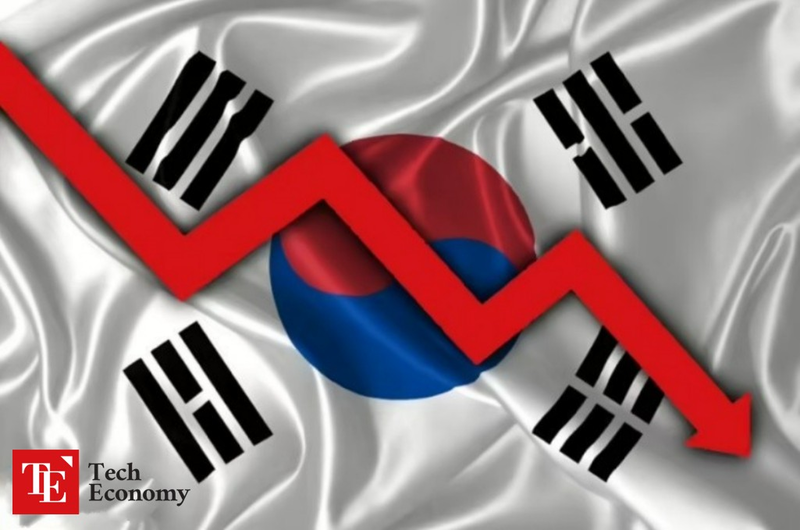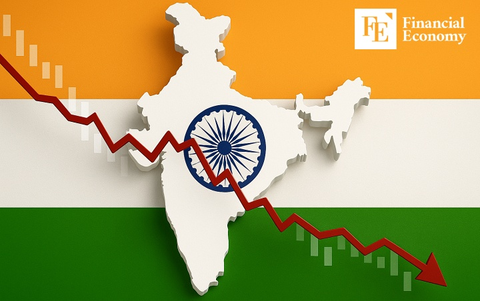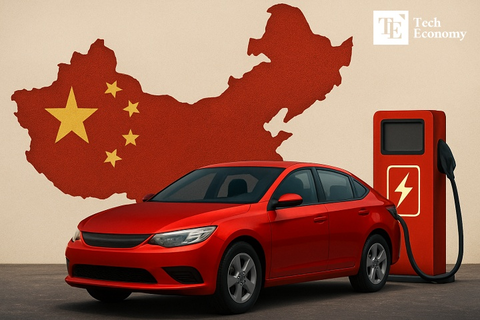Korea’s 8 Major Industries See Market Share Drop for First Time in a Decade — Facing a ‘Triple Crisis’ in Exports, Domestic Demand, and Talent
Input
Modified
From Semiconductors to Automobiles, Core Industries Losing Ground
Exports Slump Amid Chinese Competition and U.S. Tariff Barriers
Prolonged Domestic Slump Accelerates Brain Drain of Top Talent

The global market share of South Korea’s eight key industries—long considered the backbone of the country’s economy—has declined across the board over the past decade. Core sectors such as semiconductors, displays, automobiles, and batteries are losing their technological edge under mounting pressure from China. Simultaneously, fallout from U.S.-China trade tensions and tariff wars is further weighing on exports. The prolonged slump in domestic demand is flashing warning signs across industries, while the accelerating outflow of top talent abroad is raising deeper concerns about the future of Korea’s industrial competitiveness.
Display Market Share Nearly Halved in 10 Years
According to market research firms like Omdia and SNE Research, all eight of Korea’s major industries—semiconductors, displays, smartphones, automobiles, petrochemicals, steel, shipbuilding, and batteries—have seen a decline in global market share over the past decade. The most dramatic drop occurred in the display sector. In 2015, Korean firms Samsung and LG held a combined 98.5% share of the small-to-medium OLED display market (used in smartphones), effectively monopolizing the space. However, by Q1 of this year, that share had fallen below 60% as Chinese competitors like BOE and CSOT gained ground.
Even semiconductors—Korea’s top export—are not immune. The combined global DRAM market share of Samsung and SK Hynix dropped from 81.5% in 2015 to 75.9% in Q1 2025. Meanwhile, China’s CXMT has completed preparations to mass-produce not only standard DRAM but also higher-value memory products such as DDR5 and HBM3. According to a February survey by Korea’s Science and Technology Planning and Evaluation Institute, China has overtaken Korea in several advanced semiconductor technologies, including AI chips, power semiconductors, and next-generation sensors—excluding only advanced packaging.
Automobiles, Korea’s second-largest export category, are also under threat. Last year, the combined vehicle sales of China’s top two automakers—BYD (4.27 million units) and Geely Group (3.34 million)—totaled 7.61 million units, surpassing Hyundai Motor Group's 7.23 million and making the Korean automaker third in global rankings. The secondary battery industry is in decline as well: its market share plummeted from 34.7% in Q4 2020 to 18.7% in Q1 2025, and all three major Korean battery makers posted operating losses. Other sectors such as smartphones (from 23.8% to 20.0%), petrochemicals (5.3% to 3.6% in ethylene), steel (4.3% to 3.4%), and shipbuilding (30% to 17%) are following a similar downtrend.
Tariff-Targeted Exports to U.S. Take a Hit
While China’s rapid industrial ascent continues, the U.S.-China tariff war, ignited during Donald Trump's presidency, has become a new headwind. According to South Korea’s Ministry of Trade, Industry and Energy, exports to Korea’s two biggest markets—China and the U.S.—both dropped by over 8% in May. Export declines were especially severe in categories affected by U.S. tariffs. Steel exports to the U.S., which were hit with a 25% tariff in March, fell 20.6% last month. Cars and auto parts, which faced two rounds of 25% tariffs in April and May, saw their U.S. export volumes decline by 32.0% and 8.3%, respectively.
The new 10% baseline tariff introduced in April also weighed on U.S.-bound exports. General machinery exports—Korea’s second-largest export category—fell 5.6% last month, and home appliance exports plunged 25.4%. While secondary batteries and bio-health products saw increases of 33.6% and 9.1%, respectively, these gains were not enough to offset the broader decline in overall U.S. exports. Even semiconductors, long a pillar of Korea’s exports to the U.S., have started to stumble. While semiconductor exports to the U.S. rose 14.6% year-over-year during January to April, they dropped 17.6% in May alone.
China, once Korea’s top export destination, is also becoming a problem. After rebounding 3.9% in April, Korea’s exports to China fell sharply again by 8.4% in May. The largest declines were in intermediate goods, such as semiconductors and petrochemicals. Chip exports to China, which account for around 30% of Korea’s total exports to the country, fell 14.6% year-on-year in May. Petrochemical exports dropped by 11.4%, and general machinery exports declined by 13.6%, exacerbated by China’s ongoing real estate slump.

5,684 High-Skilled Koreans Move to U.S.—World’s Highest Brain Drain Rate
To make matters worse, Korea’s domestic market remains sluggish. According to Statistics Korea, the average constant-value retail sales index for January to April declined 0.2% year-on-year, continuing a three-year downturn. This has led to a wave of small business closures. In Q1, the number of new store openings in Seoul fell to 8,772—the lowest since data tracking began in 2019. Meanwhile, closures surged. While store openings (16,827) and closures (15,316) were nearly equal in Q1 2023, closures outnumbered openings by 1.7 times this year.
The sharp decline in new businesses is largely due to deteriorating profitability in self-employment. A nationwide survey of 1,000 small business owners conducted in April by the Korea Federation of Micro Enterprises found their average monthly operating profit was 2.09 million won—lower than the monthly minimum wage for a 40-hour workweek (2.10 million won). Business survival rates are also falling: the one-year survival rate for newly established everyday service businesses in Seoul dropped from 81.6% in 2023 to 80.9% in 2024, and to 78.2% this year. This means 1 in 5 businesses shuts down within a year. “Existing shops are in survival mode, and new entries are dwindling,” the federation noted.
Amid weak domestic demand and export stagnation, Korea is also facing an accelerating brain drain. According to the U.S. State Department, 5,684 South Koreans received EB-1 or EB-2 employment-based visas in 2024, equivalent to 10.98 recipients per 100,000 people, the highest rate in the world. That figure is over 10 times higher than India (1.44) and China (0.94). Since these visas typically provide green cards for entire families, it's estimated that 1,400 to 1,500 highly skilled Koreans and their dependents emigrated to the U.S. last year alone.





















